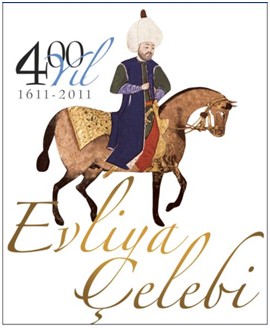
Like almost every other country, Turkey has been under lockdown for quite some time now. As the days pass by and spring knocks at the door, it’s getting even harder to stay indoors, unable to go out for a stroll in the city or by the Bosphorus. Our interaction with the outside world is strictly limited to what we see from our windows—or our balcony, if we are lucky enough to have one.
Istanbul is a concrete jungle today. Especially in central and more crowded neighborhoods, people are living in apartment buildings adjacent to each other, surrounded by narrow streets with almost no space left to breathe. We are some of the luckier inhabitants if we happen to have a garden or a view of a couple of trees from our window.
And there, on one of these days of self-isolation, during the Turkish-style voluntary quarantine and complete—weekend—lockdowns, as I was looking out from my window, I found myself walking over the rooftops, jumping off the edge and flying over the Bosphorus…
Which reminded me of someone. A legendary figure from the seventeenth-century Kostantîniyye. A scholar of a thousand sciences (Hezârfen). The first Turk to fly. Hezârfen Ahmed Çelebi.
Evliya Çelebi’s Hezârfen

Evliya Çelebi’nin Dünyası’ Exhibition 2011 – Turkish Ministry of Culture and Tourism
Hezârfen Ahmed Çelebi is a figure mentioned in Evliya Çelebi’s Seyahatnâme (Book of Travels), the longest and most comprehensive travel account in Islamic literature. The work covers the travels of Evliya Çelebi within and outside the empire for about 50 years, and it’s one of the most important works of reference providing insights on the seventeenth-century Ottoman world, its geography, topography, politics, economics, religion, folklore, and so on. Evliya Çelebi and his work are so significant and influential that the 400thanniversary of Evliya Çelebi’s birth (2011) was acknowledged and celebrated by UNESCO,[2]and in 2013,Seyahatnâme was included in the UNESCO Memory of the World Register.[3]
“Most men, they’ll tell you a story straight through. It won’t be complicated, but it won’t be interesting either.” (Big Fish, Tim Burton, 2003)
By no means was Evliya Çelebi like most men. He was a great narrator, and his extensive work, which covers 10 books and 4760 pages,[1] was woven through stories. Yet for the very same reason, he is criticized by some contemporary scholars and readers. There are endless discussions on the Seyahatnâme: “How much of it is actually true and how much of it just fiction?” As a contemporary reader, one might want to see clearer distinctions between historical reality and fiction, yet it’s not always possible when it comes to Seyahatnâme. One such example is Hezârfen Ahmed Çelebi.

A stamp issued by PTT (Turkish Post Office) in 1971, commemorating the 60th anniversary of the foundation of Turkish Airforce.
Hezârfen Ahmed Çelebi was a scholar living in Kostantîniyye in the seventeenth-century. According to the Seyahatnâme, he practiced flying several times using the wings he built in Okmeydanı. Then, one day, as the Sultan Murad IV was watching from the Sinan Paşa mansion in Sarayburnu, he flew off the top of Galata Tower, across the Bosphorus, and landed in Üsküdar, on the Asian side of the modern city. This incident was heard about all over the empire and in Europe, and the Sultan awarded him with a sack of gold. Afterwards, the Sultan announced that he was a man to be feared, since he could achieve whatever he wanted to; and that such a man’s existence should not be permitted. Therefore, he was sent to Algeria in exile and eventually died there.
Except for the Seyahatnâme, no written sources mention Hezârfen Ahmed Çelebi or someone flying from the Galata Tower over the Bosphorus. Bearing in mind the extensive and precise practice of recordkeeping in the seventeenth-century Ottoman Empire, the vakayinames (annals) and tahrirs (registers), for example, it is not very likely that such a big incident and financial award would have been ignored, if it really took place. Likewise, such a significant event and technological advancement would have been recorded in the Western sources as well, presuming it took place. From a scientific perspective, even with today’s technology, covering the distance of roughly 3.5 km within the altitude difference of 60 m is almost impossible. For all these reasons, Hezârfen Ahmed Çelebi is thought to be a legend rather than a real person.
Nevertheless, no matter if he was real or fiction, Hezârfen Ahmed Çelebi and his story are among the most famous in Turkish history. His story was heard so many times, generation after generation, that he became a legendary figure in the end, a symbol and a source of inspiration for others, especially in terms of science and aviation.
“Man is a bird without wings, and a bird is a man without sorrows” – (Louis de Bernières, Birds Without Wings)

………………………………………………………………………………………………………………..
[1] Image Source: Kayıp Rıhtım Aylık Öykü Seçkisi 106. Sayı [Available at: https://kayiprihtim.com/kayip-rihtim/aylik-oyku-seckisi/seckide-106-sayi-hezarfen-ahmet-celebi/] [Accessed on: 27/04/2020] Illustrator: Aslı Ekim, 2018. Instagram Page: https://www.instagram.com/aslikimart/
[2] Celebration of anniversaries in 2011, UNESCO [Available at: http://www.unesco.org/new/en/unesco/events/prizes-and-celebrations/celebrations/anniversaries-celebrated-by-member-states/2011/] [Accessed on: 27/04/2020]
[3]“UNESCO established the Memory of the World Programme in 1992 with the aims of facilitating preservation, assisting universal access and increasing awareness worldwide of the existence and significance of the world’s documentary heritage. The Memory of the World Register lists documentary heritage which has been recommended by the International Advisory Committee, and endorsed by the Director-General of UNESCO, as corresponding to the selection criteria regarding world significance and outstanding universal value.” More can be found on: https://en.unesco.org/programme/mow
[4] Günümüz Türkçesiyle Evliyâ Çelebi Seyahatnâmesi, Yapı Kredi Yayınları 2013. See: http://kitap.ykykultur.com.tr/kitaplar/gunumuz-turkcesiyle-evliya-celebi-seyahatnamesi-kutulu-2-cilt

